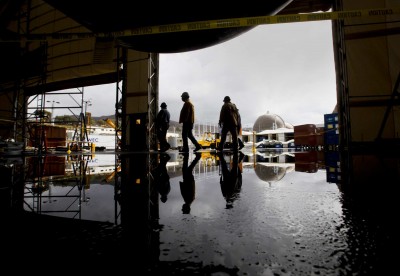On March 15, less than a week after the destructive earthquake and tsunami duo hit Japan, the country is facing another disaster, one that has stemmed from the previous two.

Prime Minister Naoto Kan said in a nationally televised statement that radiation has spread from four reactors of the Fukushima Dai-ichi nuclear plant in Fukushima province. This plant was one of the hardest hit.
Part of the plant had exploded, leaking its nuclear fuel into the atmosphere, and creating harmful situations for people up to 18 miles away from the plant. 140,000 people were urged to evacuate and escape the exposure.
According to the International Atomic Energy Agency, “radioactivity was released directly into the atmosphere at dose rates equivalent to 4,000 chest X-rays every hour.”
Officials in Tokyo said the radiation levels were ten times above normal by evening on the day of the explosion. Eight hours after, the U.N. weather agency said winds were carrying the radioactive fuels over the Pacific Ocean and away from Japan.
These winds are causing panic in countries along the coast of the Pacific Ocean such as Australia and the U.S., because Hawaii, California, and Oregon have already been affected once by the tsunami.
Efforts have been made to cool the plants and prevent further radioactive material being released into the atmosphere, but authorities said they had to wait two or three days before pouring water into the fuel pool of the most dangerous reactor, reactor four.
A small amount of employers were kept in the plants, using seawater as a last resort to cool the plants, even though seawater is known to ruin the machines.













































